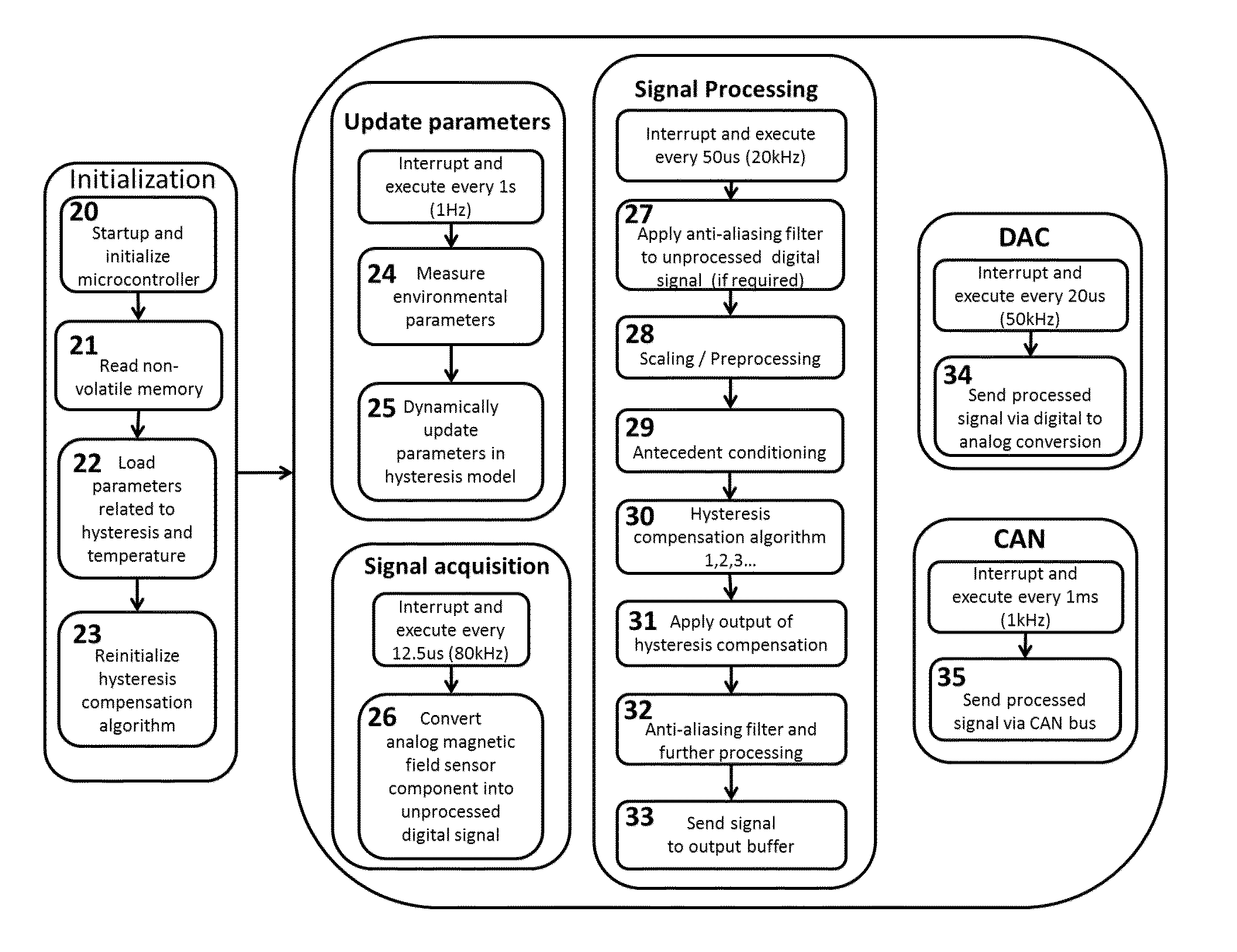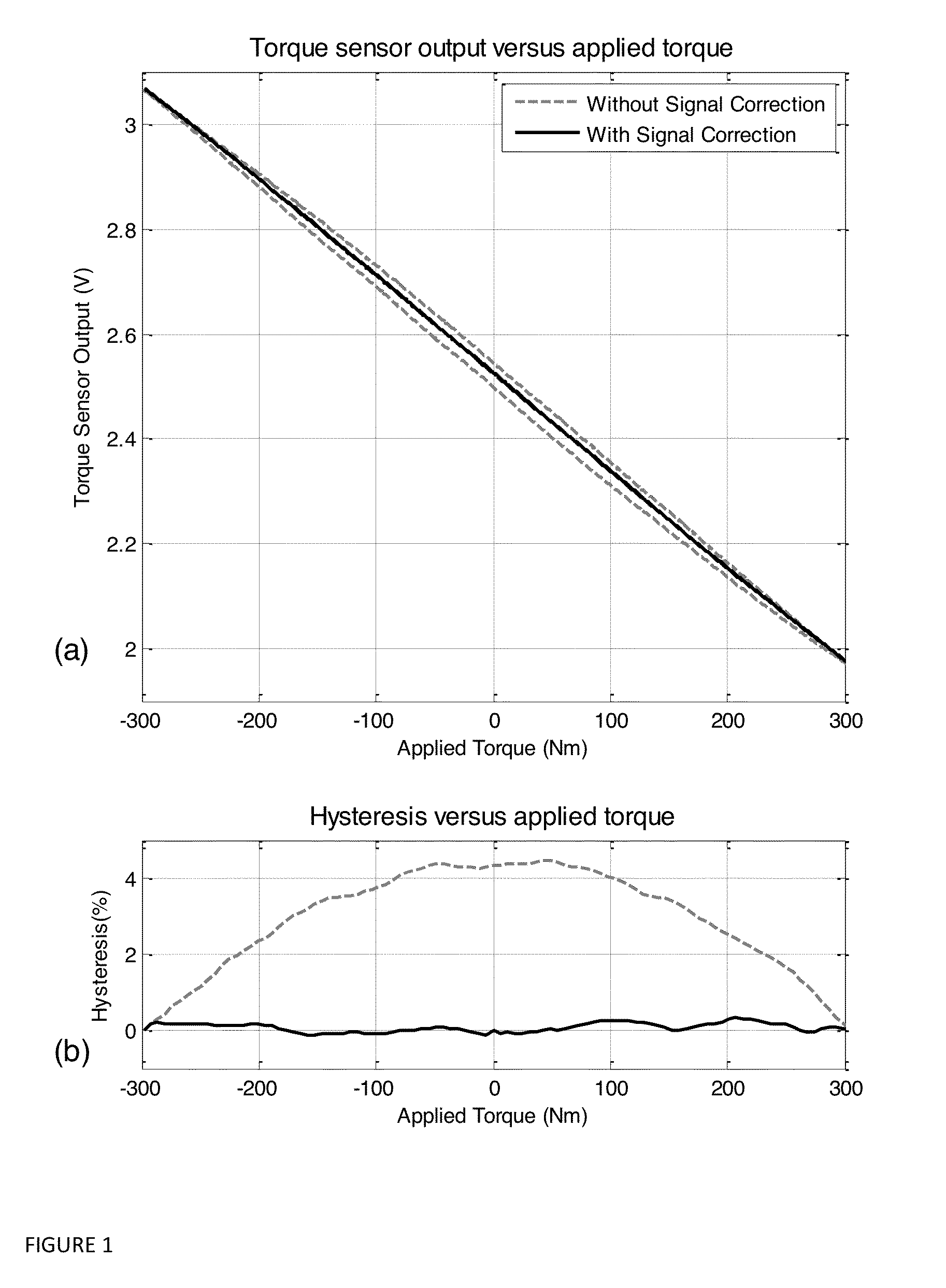Devices and methods to enhance accuracy of magnetoelastic torque sensors
- Summary
- Abstract
- Description
- Claims
- Application Information
AI Technical Summary
Benefits of technology
Problems solved by technology
Method used
Image
Examples
Embodiment Construction
1. Applications of Signal Correction Devices
[0049]The present invention describes devices and methods for increasing the accuracy of a magnetoelastic torque sensor system. This invention uses signal correcting devices and methods to acquire and digitize one or more electronic signals generated from magnetoelastic torque sensing systems that exhibit hysteresis, process such signal(s) to recognize the error from but not limited to hysteresis, and then send a signal that is a function of torque with the error factor(s) reduced or eliminated effectively in real-time. The benefits of implementing such signal correction devices and methods is that errors such as hysteresis that are inherent in torque transducers as described elsewhere herein, including constructions using rings, collarless constructions, and constructions using a coating, can be reduced or eliminated, as can shaft-to-shaft variations in the characteristics of errors such as hysteresis. The capability of removing errors su...
PUM
 Login to View More
Login to View More Abstract
Description
Claims
Application Information
 Login to View More
Login to View More - R&D
- Intellectual Property
- Life Sciences
- Materials
- Tech Scout
- Unparalleled Data Quality
- Higher Quality Content
- 60% Fewer Hallucinations
Browse by: Latest US Patents, China's latest patents, Technical Efficacy Thesaurus, Application Domain, Technology Topic, Popular Technical Reports.
© 2025 PatSnap. All rights reserved.Legal|Privacy policy|Modern Slavery Act Transparency Statement|Sitemap|About US| Contact US: help@patsnap.com



